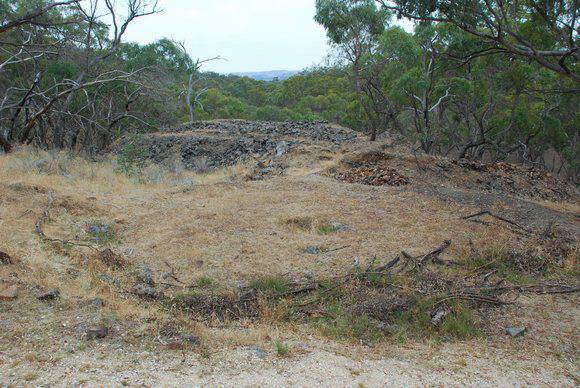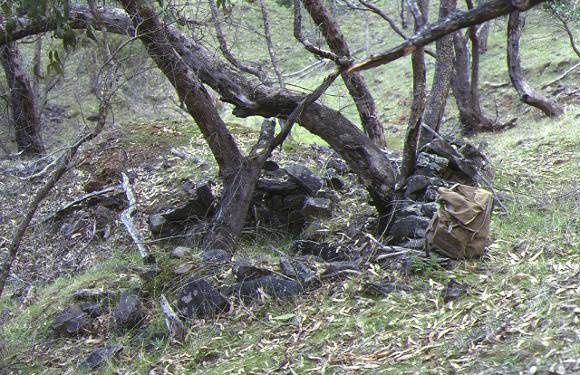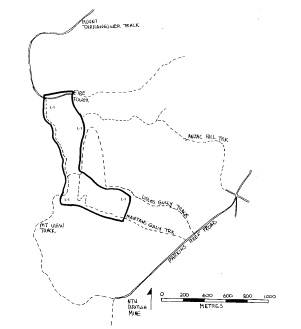| Back to search results » | Back to search page » |
|
LISLES AND MANTONS GULLIES QUARTZ GOLD MINES
LocationMOUNT TARRENGOWER ROAD MALDON, MOUNT ALEXANDER SHIRE
File Number608046LevelRegistered |
|
Statement of Significance
The story of quartz mining in Lisles and Mantons gullies revolves
around the working of three parallel reefs: Lisles, Mantons, and
Braithwaites (or the Mount), all worked extensively by small mining
companies during the nineteenth century. The vicinity experienced one
period of large-scale mining: in the early 1880s, the Grand Junction
Company drove a tunnel from the head of Manton's Gully and, after
encouraging results, erected a 24-head battery and three roasting
kilns to burn the quartz prior to crushing. The initial success of the
Grand Junction during the early 1880s blossomed into a full-scale
mining boom, and soon the whole of the ground along the line of the
reefs-a distance of a mile and a quarter-was taken up. After the
1880s, however, little work was done. The Lisles and Mantons Gullies Quartz Gold Mines are of historical,
archaeological and scientific importance to the State of Victoria. The Lisles and Mantons Gullies Quartz Gold Mines are historically and
scientifically important as a characteristic example of an important
form of gold mining. Gold mining sites are of crucial importance for
the pivotal role they have played since 1851 in the development of
Victoria. As well as being a significant producer of Victoria's
nineteenth century wealth, quartz mining, with its intensive reliance
on machinery, played an important role in the development of Victorian
manufacturing industry. The Lisles and Mantons Gullies Quartz Gold
Mines are important as manifestations of this aspect of gold mining. The Lisles and Mantons Gullies Quartz Gold Mines are scientifically
important as one of the few places known in Victoria where accesible
and significant evidence of horse-powered haulage whims still exist.
Mining relics in Lisle's and Manton's gullies document a range of
mining operations carried out over an 80-year period, from 1856 to the
1930s. The various elements making up the place appear to reflect the
extensive use of the tribute system of mining, whereby small
co-operative parties of miners laboured under contract to mining
companies, for a share of any profits. This system of working is
reflected in the dense distribution of the whim platforms (and
associated mullock heaps and blacksmith shops) and the continuous line
of closely spaced shafts, each group serviced by a carefully
constructed siding access track. The occurrence of a mining boom is
evinced by relics including the adit and the remains of the 24-head
battery and roasting kilns. The Lisles and Mantons Gullies Quartz Gold Mines are scientifically
significant for their potential to yield artefacts and evidence which
will be able to provide significant information about the
technological history of gold mining.
Group
Mining and Mineral Processing
Category
Adit






